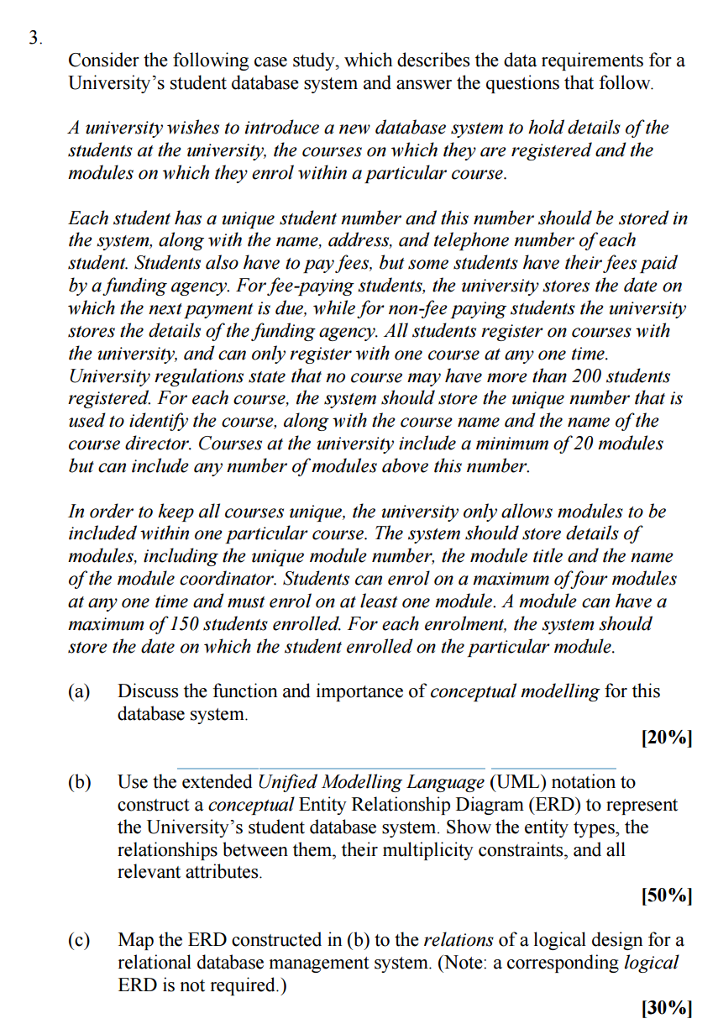Answered step by step
Verified Expert Solution
Question
1 Approved Answer
I am looking for part B and C Consider the following case study, which describes the data requirements for a University's student database system and

I am looking for part B and C
Consider the following case study, which describes the data requirements for a University's student database system and answer the questions that follow. A university wishes to introduce a new database system to hold details of the students at the university, the courses on which they are registered and the modules on which they enroll within a particular course. Each student has a unique student number and this number should be stored in the system, along with the name, address, and telephone number of each student. Students also have to pay fees, but some students have their fees paid by a funding agency. For fee-paying students, the university stores the date on which the next payment is due, while for non-fee paying students the university stores the details of the funding agency. All students register on courses with the university, and can only register with one course at any one time. University regulations state that no course may have more than 200 students registered. For each course, the system should store the unique number that is used to identify the course, along with the course name and the name of the course director. Courses at the university include a minimum of 20 modules but can include any number of modules above this number. In order to keep all courses unique, the university only allows modules to be included within one particular course. The system should store details of modules, including the unique module number, the module title and the name of the module coordinator. Students can enroll on a maximum of four modules at any one time and must enroll on at least one module. A module can have a maximum of 150 students enrolled. For each enrolment, the system should store the date on which the student enrolled on the particular module. (a) Discuss the function and importance of conceptual modelling for this database system. (b) Use the extended Unified Modelling Language (UML) notation to construct a conceptual Entity Relationship Diagram (ERD) to represent the University's student database system. Show the entity types, the relationships between them, their multiplicity constraints, and all relevant attributes. (c) Map the ERD constructed in (b) to the relations of a logical design for a relational database management systemStep by Step Solution
There are 3 Steps involved in it
Step: 1

Get Instant Access to Expert-Tailored Solutions
See step-by-step solutions with expert insights and AI powered tools for academic success
Step: 2

Step: 3

Ace Your Homework with AI
Get the answers you need in no time with our AI-driven, step-by-step assistance
Get Started


